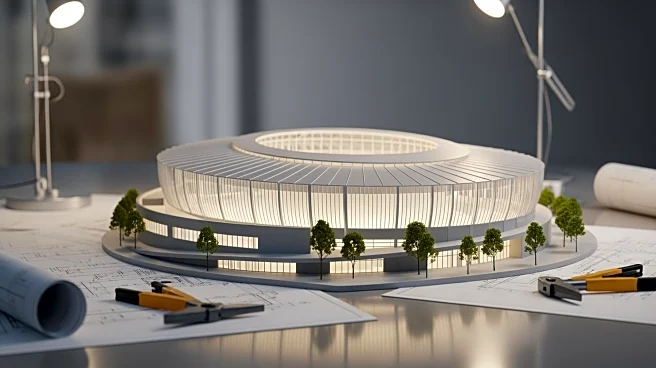What's Happening?
The San Antonio Spurs have successfully secured funding for a new downtown arena following the approval of a ballot measure by city residents. The measure, which passed with 52.5% approval from 246,710 voters, allocates $1.3 billion for the construction
of the arena next to the Alamodome and Convention Center. The funding will be sourced from a combination of city and Bexar County venue tax, with the Spurs organization committing $500 million towards the project. The San Antonio city council had previously approved the framework for the arena deal in August. Construction is scheduled to begin in the second quarter of 2026 and is expected to be completed by mid-2028.
Why It's Important?
The approval of the funding for the new arena is a significant development for the San Antonio Spurs and the local community. The new facility is expected to enhance the city's infrastructure and boost economic activity in the downtown area. It reflects the strong relationship between the Spurs organization and the city, as highlighted by Peter J. Holt, chairman of Spurs Sports and Entertainment. The new arena will replace the Frost Bank Center, which has been the team's home since the 2002-03 NBA season. This move is likely to attract more visitors and events to San Antonio, benefiting local businesses and increasing tourism revenue.
What's Next?
With the funding secured, the next steps involve the commencement of construction in 2026. The Spurs will continue to play at the Frost Bank Center until the new arena is completed. The current lease with Frost Bank Center expires in 2032, but the team could potentially move to the new arena earlier, subject to financial penalties. The development of the new arena is expected to be closely monitored by local stakeholders, including city officials and business leaders, who will be keen to ensure the project proceeds smoothly and delivers the anticipated economic benefits.
Beyond the Headlines
The construction of a new arena in San Antonio could have broader implications beyond sports and entertainment. It may serve as a catalyst for urban development and revitalization in the downtown area, potentially leading to increased property values and new business opportunities. Additionally, the project underscores the importance of public-private partnerships in achieving large-scale infrastructure goals, setting a precedent for future developments in other cities.















